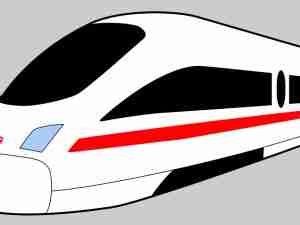Unless prices for natural gas and crude start to converge soon in the United States, the overwhelming incentive to switch to dual fuel engines which use a mix of diesel and natural gas will be overwhelming.
It will oust oil-based fuels from a huge range of applications, ranging from trains, ships and trucks to industrial engines.
If all railroad, marine and industrial engines were switched to dual fuel and ran on maximum natural gas the potential reduction in diesel demand would be enormous.
U.S. homes and businesses consumed 3.7 million barrels per day of distillate fuel oil for heating and running engines in 2011, according to the Energy Information Administration (EIA). Railroads accounted for 204,000 barrels per day, with marine bunkers adding another 139,000.
The big prize is the market for highway vehicles, which consumed 2.4 million barrels a day. Some of that is used in cars and light trucks, which are not suitable for conversion. But a big chunk was used in heavy trucks, as well as refuse collection, municipal buses, and mail delivery services, all of which rely on central refuelling facilities and could be retrofitted to use dual fuel without much difficulty.
The diesel market is fast approaching a tipping point. So far the hassle of retrofitting engines and installing all the infrastructure needed to distribute liquefied natural gas (LNG) and compressed natural gas (CNG) has encouraged most businesses to stick with diesel even though gas has been cheaper.
But if enough businesses convert, and enough distribution infrastructure is built, conversion costs will likely fall, and competitive pressure will force others to follow suit.
Major Conversion Plans
It is easy to dismiss this scenario as far-fetched, but it is already starting to happen.
According to the Wall Street Journal (WSJ), Burlington Northern-Santa Fe (BNSF) railroad, the second-largest diesel consumer in the United States after the navy, plans to test using liquefied natural gas (LNG) to power some trains this year, and could eventually retrofit its entire fleet of 6,900 locomotives to run on a mix of gas and diesel ("Berkshire's BNSF railway to test switch to natural gas" March 6).
Reuters reported on Tuesday that ports in northern Europe are installing refuelling infrastructure to enable vessels to run on LNG. Twenty vessels are already running on gas, mostly in Scandinavia, but many more are already on order.
An international working group is already developing guidelines for safe procedures for LNG bunkering and includes some of the world's largest container ports and bulk terminals: Antwerp, Amsterdam, Bremerhaven, Hamburg, Los Angeles, Long Beach and Rotterdam.
Halliburton, one of the world's largest oilfield service companies, has started to convert some of its hydraulic pressure pumping units, used to fracture shale, to run on a gas/diesel mix, as part of its "frac of the future" cost reduction programme. And dual fuel engines are also being deployed widely in offshore oil and gas production.
Shell announced on Tuesday it would build two small-scale liquefaction plants in Louisiana and Ontario to "form the basis of two new LNG transport corridors in the Great Lakes and Gulf Coast regions." The company is also working to use more natural gas to fuel its own operations.
ESTABLISHED TECHNOLOGY
The technology to modify a conventional diesel engine to run on a mix of diesel and natural gas has been around for decades.
BNSF considered using gas-powered locomotives in the late 1980s, according to the WSJ.
Leading engine makers General Electric, Caterpillar and Wartsila all offer a variety of dual-fuel models that can run on an mix of up to 90 percent natural gas and 10 percent diesel.
In 1998, the California Energy Commission and the U.S. Department of Energy and the Southern California Gas Company helped the City of Lompoc to retrofit four municipal buses with dual fuel gas engines from Caterpillar, using compressed natural gas (CNG), and study how their performance ov







